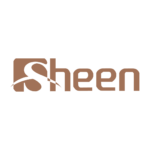The global coffee machine market is polarized between fully automatic (FA) and semi-automatic (SA) models, each resonating with distinct consumer priorities. To craft effective export strategies, Sheen must align product offerings with regional preferences, leveraging AIDA (Attention, Interest, Desire, Action) frameworks.
Market Segmentation & Core Differences
- Fully Automatic Coffee Machines: Prioritize convenience, speed, and minimal user input. Dominant in urbanized, time-constrained markets (e.g., North America, Western Europe).
- Semi-Automatic Coffee Machines: Emphasize craftsmanship, customization, and tactile control. Preferred in coffee-centric cultures (e.g., Italy, Spain) and among enthusiasts.
Key Statistic: FA machines hold 68% market share in the U.S., while SA models dominate 75% of Italian household purchases (Statista, 2023).
Regional Acceptance Drivers
1. North America & Western Europe
- FA Dominance: Busy lifestyles favor “one-touch” brewing. Brands like Nespresso and De’Longhi target offices and high-income households with pod-compatible FA systems.
- SA Niche: Limited to luxury segments (e.g., La Marzocco leverages SA for café-grade quality).
Consumer Insight: 54% of U.S. millennials associate FA machines with “premium convenience,” perusing Amazon reviews for energy efficiency and noise reduction.
2. Italy & Southern Europe
- SA Tradition: Manual control is non-negotiable. Rancilio and Rocket Espresso cater to barista culture, where grind size and extraction time are ritualistic.
- FA Resistance: Only 12% of Italians own FA machines; perceived as “impersonal” (Illy’s 2022 survey).
3. Asia-Pacific & Latin America
- Hybrid Demand: Urban middle classes (e.g., India, Brazil) lean toward affordable FA models (e.g., Philips 3200) but show curiosity for SA entry-level kits (e.g., Lelit Bianca).
- Price Sensitivity: FA pricing ($500–$1,500) limits adoption outside premium segments.
Emotional & Functional Triggers
FA Machines:
- Desire Drivers:
- Time-saving (FA brews 12 cups in 5 mins vs. SA’s 15–20 mins).
- Consistency for coffee chains (e.g., Starbucks’ Verismo line).
- Smart features (Wi-Fi connectivity, app control) appeal to Gen Z in Seoul and Tokyo.
SA Machines:
- Desire Drivers:
- “Crafted by you” storytelling (e.g., La Pavoni leverages Instagrammable lever mechanics).
- Cost-effectiveness for small cafés (SA parts are cheaper to replace).
- Sustainability: Reusable filters and locally sourced beans align with EU’s eco-conscious trends.
Export Strategies for Sheen
- Tailor by Region:
- North America/Western Europe: Push FA models with app-enabled customization (e.g., programmable milk frothing levels). Highlight energy-saving certifications.
- Italy/Southern Europe: Introduce SA machines with Italian-made boilers and retro aesthetics. Partner with local barista influencers for workshops.
- Price Tiering:
- In emerging markets (India, Brazil), offer SA “starter kits” ($200–$300) bundled with grinders and training DVDs.
- For mid-tier markets (Mexico, South Africa), promote FA machines with refillable capsules to undercut pod costs.
- Hybrid Solutions:
- Develop FA machines with manual override modes (e.g., adjustable grind settings) to bridge cultural gaps.
- Channel Focus:
- Target U.S. big-box retailers (Best Buy) for FA; partner with specialty cafés in Italy for SA demos.
Conclusion
FA machines thrive where convenience trumps ritual, while SA models thrive where coffee is art. Sheen’s success hinges on hybrid innovation and hyper-localized storytelling—positioning FA as “effortless luxury” in mature markets and SA as “craft empowerment” in emerging ones.

